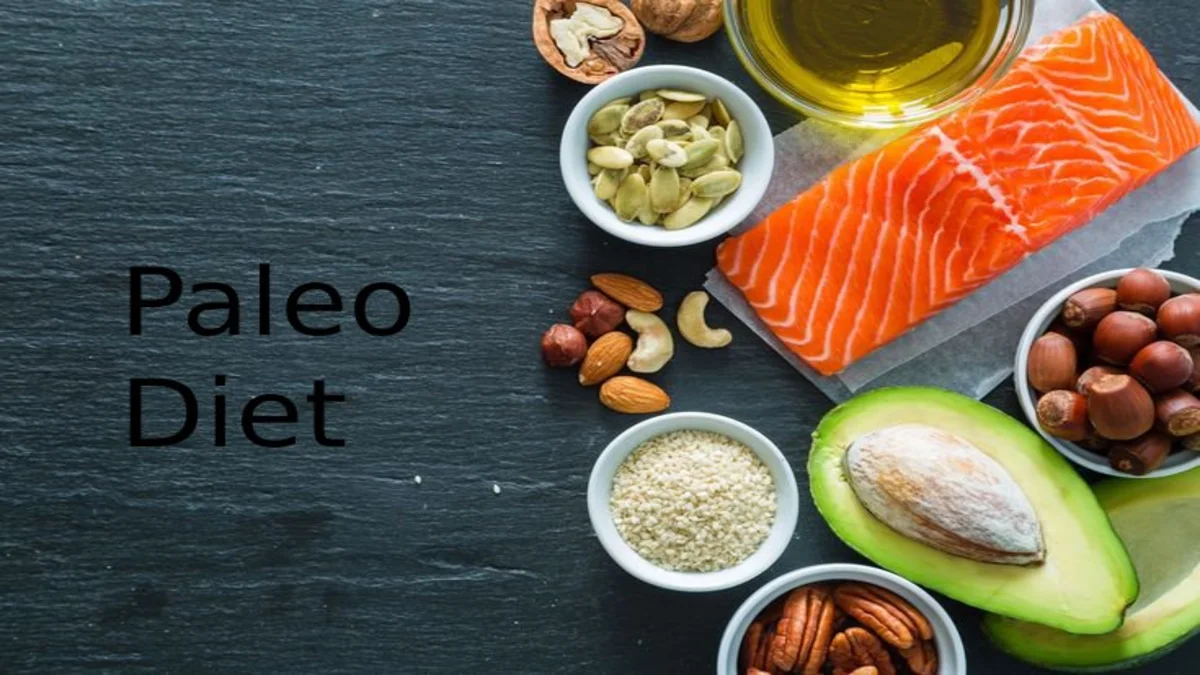Transform your health with the Paleo Diet: Embrace ancestral eating for vitality. Discover nutrient-dense foods and reclaim your well-being today.
In the fast-paced world we live in, the quest for optimal health has become more crucial than ever. One lifestyle that has gained significant attention for its holistic approach is the Paleo Diet. Originating from the Paleolithic era, this dietary regimen aims to align our eating habits with those of our hunter-gatherer ancestors. In this exclusive article, we delve deep into the intricacies of the Paleo Diet, exploring its origins, principles, benefits, and practical tips for successful implementation.
What Is the Paleo Diet?
The Paleolithic, or “Paleo,” diet looks back at what humans consumed over two million years ago in the Paleolithic era to try and address the problems of the modern world. Paleo proponents contend that to maintain good health, we should consume foods that were available during the Stone Age because our genetic makeup and anatomy haven’t changed much since then.
For food, our ancestors hunted, fished, and collected wild plants because they lacked the sophisticated stone tools necessary to cultivate and grow plants. If they lived long enough, it was thought that their regular diet of lean meats and plant foods, combined with their high level of physical activity from intense hunting, prevented them from developing modern diseases like diabetes, cancer, and heart disease. But our ancestors’ life expectancy was a small percentage of what it is now.
At its height in 2014, the Paleo diet gained popularity as more people wanted to know where their food was coming from and eat healthier.
How the Paleo Diet Works?
The Paleo diet consists of lean meats, fish, fruits, vegetables, nuts, and seeds. It is also known as the caveman or Stone Age diet. Selecting fruits and vegetables with low glycemic index is emphasized by the diet’s proponents.
The Paleo diet is controversial for several reasons, including what foods were available in prehistoric times, how regional diets differ (tropical vs. Arctic, for example), how little modern fruits and vegetables resembled their wild counterparts and the disagreement among Paleo diet enthusiasts about what should and shouldn’t be included in the diet. These variations mean that there isn’t just one “true” Paleo diet.
For instance, despite being known to exist during the Paleolithic era, white potatoes are typically avoided on the Paleo diet due to their high glycemic index. Because the Paleo diet emphasizes fresh foods, processed foods are also technically off-limits. However, some Paleo diets permit frozen fruits and vegetables because the freezing process preserves most of the nutrients.
All things considered, the diet is high in protein, low in carbohydrates (especially limiting high glycemic index carbohydrates), moderate in fat (primarily from unsaturated fats), high in fiber, and low in sodium and refined sugars. The monounsaturated and polyunsaturated fats found in marine fish, avocado, nuts, seeds, and olive oil (which contains the omega-3 fats EPA and DHA) are beneficial to human health.
Because it is fed grass rather than grain, grass-fed beef is frequently highlighted in diets and is thought to contain more omega-3 fats than conventional beef. Alpha-linolenic acid (ALA), a precursor to EPA and DHA, is present in trace amounts. Nevertheless, the body can only convert a small percentage of ALA to long-chain omega-3 fatty acids (EPA and DHA). Additionally, the amount of omega-3 varies greatly based on the specific feeding schedule and breed-specific variations in fat metabolism.
Generally speaking, grass-fed beef has substantially less omega-3 than oily marine fish. A 3-ounce portion of cooked salmon has 1000–2000 mg of EPA/DHA, while a 3-ounce portion of grass-fed beef has only 20–200 mg of ALA.
A paleo diet meal plan

Depending on what was accessible at the time and where they lived in the world, Paleolithic humans were able to thrive on a variety of diets.
A high-carb diet rich in plants was consumed by some, while a low-carb diet heavy in animal products was consumed by others.
Thankfully, the modern interpretation of the paleo diet does not include eating insects, even though some people do.
The paleo diet regimen consists of:
- unprocessed meats
- fish
- eggs
- vegetables
- fruits
- nuts
- seeds
- herbs
- spices
- nutritious fats and oils
Usually, foods to stay away from include:
- processed foods
- added sugar
- soft drinks
- artificial sweeteners
Foods to avoid include:
- grains
- most dairy products
- legumes
It’s crucial to remember that the aforementioned are only suggestions and should not be interpreted as absolutes. All of this is customizable to your requirements and tastes.
Items to omit from a paleo diet
Some foods are discouraged from being consumed on the paleo diet, such as:
- Sugar and high-fructose corn syrup are found in a variety of products, including soft drinks, fruit juices, table sugar, candy, pastries, ice cream, and many others.
- Grains include bread, pasta, wheat, cereal, spelled, rye, and barley.
- Beans, lentils, and other legumes
- Dairy: most dairy, especially low-fat dairy (some paleo diets include full-fat dairy, such as butter and cheese).
- Soybean oil, sunflower oil, cottonseed oil, corn oil, grapeseed oil, safflower oil, and other vegetable oils
- Artificial sweeteners include aspartame, sucralose, cyclamates, saccharin, and acesulfame potassium (natural sweeteners should be used instead).
- Highly processed foods include anything labeled “diet” or “low fat” or containing a lot of additives, such as artificial meal replacements.
A simple rule of thumb for the paleo diet is to avoid anything that appears to have been manufactured in a factory.
To avoid these ingredients, read ingredient lists and nutrition labels on all foods, including those labeled as “health foods.”
Paleo diet foods to eat
On the paleo diet, you can eat a wide variety of whole, unprocessed foods. This includes the following:
- Beef, lamb, chicken, turkey, pork, and other meats
- Salmon, trout, haddock, shrimp, shellfish, and other seafood (preferably wild-caught)
- Free-range, pastured, or omega-3-enriched eggs
- Broccoli, kale, peppers, onions, carrots, tomatoes, and so on.
- Fruits include apples, bananas, oranges, pears, avocados, strawberries, blueberries, and other varieties.
- Tubers include potatoes, sweet potatoes, yams, turnips, and other root vegetables.
- Almonds, macadamia nuts, walnuts, hazelnuts, sunflower seeds, pumpkin seeds, and other seeds and nuts
- Extra virgin olive oil, avocado oil, and other healthy fats and oils
- Sea salt, garlic, turmeric, rosemary, and other spices.
When following a paleo diet, many people prefer grass-fed meats, pastured eggs, and organic produce. This, however, is not required.
Paleo diets that have been modified
The paleo diet is now available in several variations. Some permit more modern foods, such as grass-fed butter, and gluten-free grains such as rice.
Many people today think of paleo as a template to base your diet on, rather than a strict set of rules you must follow.
Drinks that fit the paleo diet
Water ought to be your first choice when it comes to staying hydrated.
Although they aren’t strictly paleo, the following beverages are generally accepted as acceptable to have during the diet:
- Tea: Tea, particularly green tea, is high in antioxidants and other beneficial compounds.
- Coffee: Coffee is also high in antioxidants. According to research, it has numerous health benefits.
Consequences and hazards
The paleo diet has numerous advantages, but it also has some disadvantages.
For instance, the paleo diet excludes several extremely nutrient-dense food groups, such as dairy, gluten-containing grains, and legumes.
Whereas dairy products contain vital nutrients like calcium, which is crucial for bone health, legumes are high in fiber, protein, and other micronutrients like iron, zinc, and copper.
A paleo diet that excludes these food groups may increase the risk of nutrient deficiencies in participants.
Furthermore, since legumes are among the main sources of protein in the diets of vegans and vegetarians, it may be impractical for them to follow the paleo diet.
High-fiber foods like fruits, nuts, and vegetables are part of the paleo diet. A person switching from a low-fiber diet to a paleo diet may experience gastric distress, such as bloating, because foods high in fiber can have a laxative effect.
It’s critical to understand that there is no one “right” way to eat, so even though the paleo diet might be beneficial for someone you know, it might not be the best choice for you.
Before committing to a paleo diet, you might want to consult a physician or nutritionist.
A one-week paleo menu example
Paleo-friendly foods make up a balanced portion of this sample menu.
Feel free to modify this menu to suit your tastes.
Monday
- Breakfast consists of fried eggs and vegetables in olive oil, as well as one piece of fruit.
- Lunch consists of a chicken salad with olive oil and a handful of nuts.
- Dinner: burgers fried in butter (no bun), vegetables, salsa
Tuesday
- Breakfast consists of bacon, eggs, and one piece of fruit.
- Lunch: the night before’s leftover burgers
- Baked salmon with vegetables for dinner
Wednesday
- Breakfast: the night before leftover salmon and vegetables
- Lunch: lettuce-wrapped sandwich with meat and fresh vegetables
- Dinner: stir-fried ground beef with vegetables and berries
Thursday
- Breakfast consists of two eggs and one piece of fruit.
- Lunch consists of leftover stir-fry from the night before and a handful of nuts.
- Dinner consists of fried pork and vegetables.
Friday
- Breakfast consists of fried eggs and vegetables in olive oil, as well as one piece of fruit.
- Lunch consists of a chicken salad with olive oil and a handful of nuts.
- Steak, vegetables, and sweet potatoes for dinner
Saturday
- Breakfast consists of bacon, eggs, and one piece of fruit.
- Lunch: the night before leftover steak and vegetables
- Dinner: baked tilapia with vegetables and avocado
Sunday
- Breakfast: the night before leftover salmon and vegetables
- Lunch: lettuce-wrapped sandwich with meat and fresh vegetables
- Dinner consists of grilled chicken wings, vegetables, and salsa.
Simple paleo grocery list
The paleo diet allows you to eat an incredible variety of foods.
This straightforward shopping list should help you get started:
- Meat: beef, lamb, pork, and so on.
- Poultry: chicken, turkey, and so on.
- Fish such as salmon, trout, and mackerel.
- Eggs
- Greens, lettuce, tomatoes, peppers, carrots, onions, and other fresh vegetables.
- Frozen vegetables include broccoli, spinach, and various vegetable mixtures.
- Fruits include apples, bananas, pears, oranges, and avocados.
- Berries include strawberries, blueberries, and other fruits.
- Almonds, walnuts, macadamia nuts, and hazelnuts are examples of nuts.
- The almond butter
- Extra virgin olive oil
- Olives
- Yummy sweet potatoes
- Condiments include sea salt, pepper, turmeric, garlic, parsley, and other herbs and spices.
Conclusion
As we wrap up this comprehensive exploration of the Paleo Diet, it’s clear that this ancestral approach to eating offers more than just a diet—it’s a lifestyle rooted in the pursuit of optimal health. From its historical foundations to the science behind its principles and the practical tips for successful implementation, the Paleo Diet stands as a compelling choice for those seeking a holistic and nourishing path to well-being. Embrace the Paleo lifestyle, and embark on a journey towards a healthier, more vibrant you.





